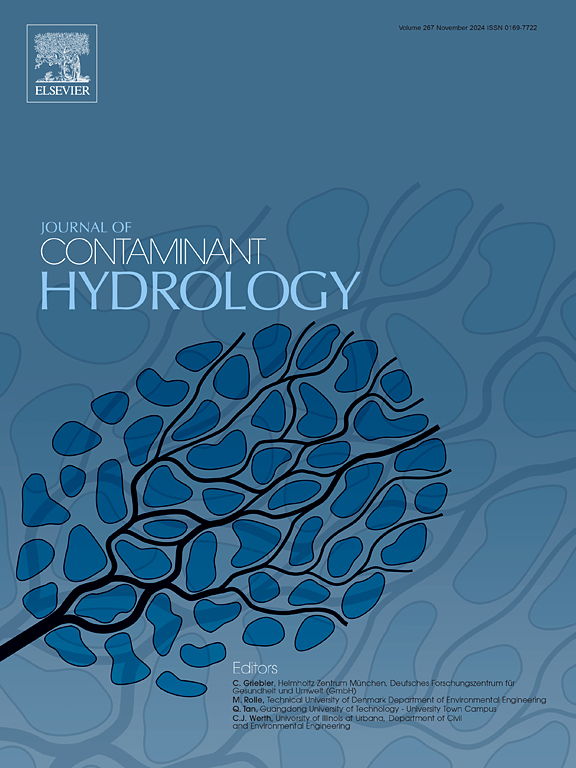微塑料的电化学修复:水处理的进展与展望
IF 4.4
3区 环境科学与生态学
Q2 ENVIRONMENTAL SCIENCES
引用次数: 0
摘要
塑料污染已成为全球关注的重要问题,微塑料(MPs)——定义为小于5毫米的塑料颗粒——对环境和人类健康构成严重威胁。2019年,全球塑料产量约为2.59亿吨,预计到2025年将增至5亿吨。到2060年,预计塑料垃圾将占累积塑料垃圾的很大一部分,可能达到12亿吨。MPs的普遍存在引发了人们对其对生态系统和人类福祉的潜在不利影响的日益关注。MPs已在广泛的生物基质中被检测到,包括胎盘血液和新生儿的其他体液。这一令人震惊的证据引起了人们对它们对人类整体健康的潜在影响的迫切关注。这篇综述文章探讨了电化学处理技术-特别是电絮凝,电氧化和电fenton工艺-作为去除水中MPs的有前途的策略。其中,电氧化的去除率高达90%,在优化的操作条件下,收率达到99.24%。报告的结论强调了关键的研究差距,倡导进一步的技术创新,并强调了提高公众意识以有效应对这一日益增长的环境挑战的重要性。本文章由计算机程序翻译,如有差异,请以英文原文为准。
Electrochemical remediation of microplastics: Progress and prospects in water treatment
Plastic pollution has emerged as a critical global concern, with microplastics (MPs)—defined as plastic particles smaller than 5 mm—posing serious threats to both environmental and human health. In 2019, global plastic production reached approximately 259 million tons, and is projected to rise to 500 million tons by 2025. By 2060, MPs are expected to account for a significant share of accumulated plastic waste, potentially reaching 1.2 billion tons. The pervasive occurrence of MPs has sparked growing concern over their potential adverse effects on both ecological systems and human well-being. MPs have been detected in a wide range of biological matrices, including placental blood and other bodily fluids of newborns. This alarming evidence raises urgent concerns regarding their potential impacts on total human health.
This review article explores electrochemical treatment techniques—specifically electrocoagulation, electro-oxidation, and the electro-Fenton process—as promising strategies for the removal of MPs from water. Among these, electro-oxidation has demonstrated removal efficiencies as high as 90 %, with yields reaching 99.24 % under optimized operational conditions. The review concludes by highlighting key research gaps, advocating for further technological innovation, and underscoring the importance of raising public awareness to combat this growing environmental challenge effectively.
求助全文
通过发布文献求助,成功后即可免费获取论文全文。
去求助
来源期刊

Journal of contaminant hydrology
环境科学-地球科学综合
CiteScore
6.80
自引率
2.80%
发文量
129
审稿时长
68 days
期刊介绍:
The Journal of Contaminant Hydrology is an international journal publishing scientific articles pertaining to the contamination of subsurface water resources. Emphasis is placed on investigations of the physical, chemical, and biological processes influencing the behavior and fate of organic and inorganic contaminants in the unsaturated (vadose) and saturated (groundwater) zones, as well as at groundwater-surface water interfaces. The ecological impacts of contaminants transported both from and to aquifers are of interest. Articles on contamination of surface water only, without a link to groundwater, are out of the scope. Broad latitude is allowed in identifying contaminants of interest, and include legacy and emerging pollutants, nutrients, nanoparticles, pathogenic microorganisms (e.g., bacteria, viruses, protozoa), microplastics, and various constituents associated with energy production (e.g., methane, carbon dioxide, hydrogen sulfide).
The journal''s scope embraces a wide range of topics including: experimental investigations of contaminant sorption, diffusion, transformation, volatilization and transport in the surface and subsurface; characterization of soil and aquifer properties only as they influence contaminant behavior; development and testing of mathematical models of contaminant behaviour; innovative techniques for restoration of contaminated sites; development of new tools or techniques for monitoring the extent of soil and groundwater contamination; transformation of contaminants in the hyporheic zone; effects of contaminants traversing the hyporheic zone on surface water and groundwater ecosystems; subsurface carbon sequestration and/or turnover; and migration of fluids associated with energy production into groundwater.
 求助内容:
求助内容: 应助结果提醒方式:
应助结果提醒方式:


